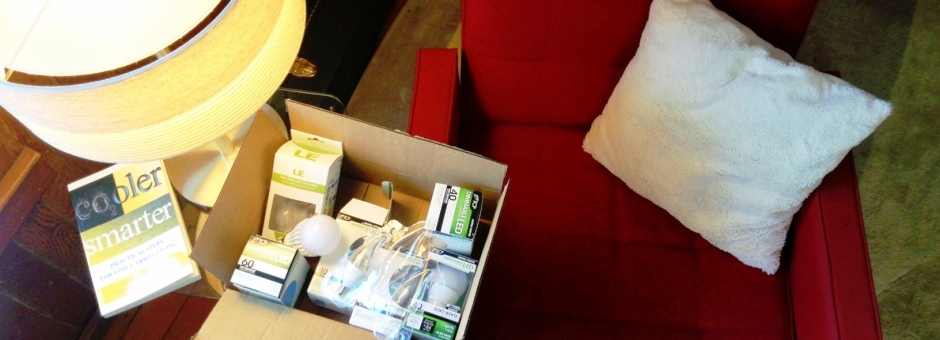Way back in January (yes, it’s already April!), I set my New Year’s resolution: Each month I tackle one thing in my own life that can reduce my footprint on this precious planet, specifically around climate change. As I mentioned, I’m easily distracted, so I thought a blog would keep me on track. Well, it worked…kinda. I’ve been taking the actions, but am behind on the writing, so here goes…
January: Divest from fossil fuels. Done! (Here’s that blog if you missed it.)
February: Change home light bulbs to LED. Okay, so this was an easy one, too. It may not be sexy, but lighting is the low-hanging fruit of energy conservation. LEDs are SOOOO much better when it comes to light quality and energy efficiency, it really was just a matter of motivation. The cost has also come way down. Ten dollars per bulb may seem like a lot of money, but when you consider the size of the impact you can have with just a couple hundred-dollar investment, it’s a no-brainer.
So, how to get motivated? When we first moved in to our house over 6 years ago, I switched almost everything to CFL, so I wasn’t in a big hurry to switch everything out again. But then I was talking to someone at Coffee Social and they mentioned in passing how they had switched their whole house over to LED. “I want to be able to say that,” was my first thought. And, “Shouldn’t I be practicing what I preach?” was my second thought. Plus, CFL bulbs are slow to warm up and you have to worry about the mercury should they break. I have to say, I’m really glad I made the switch!
Here are my tips, if you want to join me:
- Color –To get the warm glow of incandescent light (really more like candlelight than daylight), I used 2700K in most rooms. To get a slightly cooler, more color-correct white light in the kitchen, I used 3500K. True daylight is closer to 5000K but looks very blue to our incandescent-trained eyes. (The industry measures light color in degrees Kelvin, thus the weird numbers.)
- Brightness – We are so used to incandescent bulbs being the standard that we associate watts with how bright a bulb is. Luckily, most LED bulbs will list the incandescent watt equivalent. (Brightness is really measured in lumens. Watts actually tell us how much energy the bulb uses, so a 100-watt incandescent is equivalent to a 16-20 watt LED because they both produce about 1600 lumens. But you don’t really need to know that.)
- Dimming – Even though they say “dimmable,” I found two issues. First, the bulb only dims a small amount and then turns off completely. Second, it turns out incandescent bulbs actually change color as they dim, getting even warmer and more candle-like. The LEDs stay the same color so you’ll never get that super-low-level warm glow. Therefore, I ended up keeping the old-fashioned incandescent bulbs in the dining room for now.
- Make a list – Survey your home and make a list of needs for each room (quantity, bulb shape, color, and brightness). I am a HUGE shop local advocate, but after driving around to multiple stores, I decided some things are worth buying online, and light bulbs might just be one of them, depending on how many different types you need.
Okay, so we’re on to March….
“Our dreams are big…our hopes high…our goals long-term…and the path is difficult. But the only failure is not to try.” – Jimmy Carter
Written and photographed by Natasha Juliana. Edited by Linda Jay. Curious about Coffee Social? Join us Tuesdays at 10 AM.


